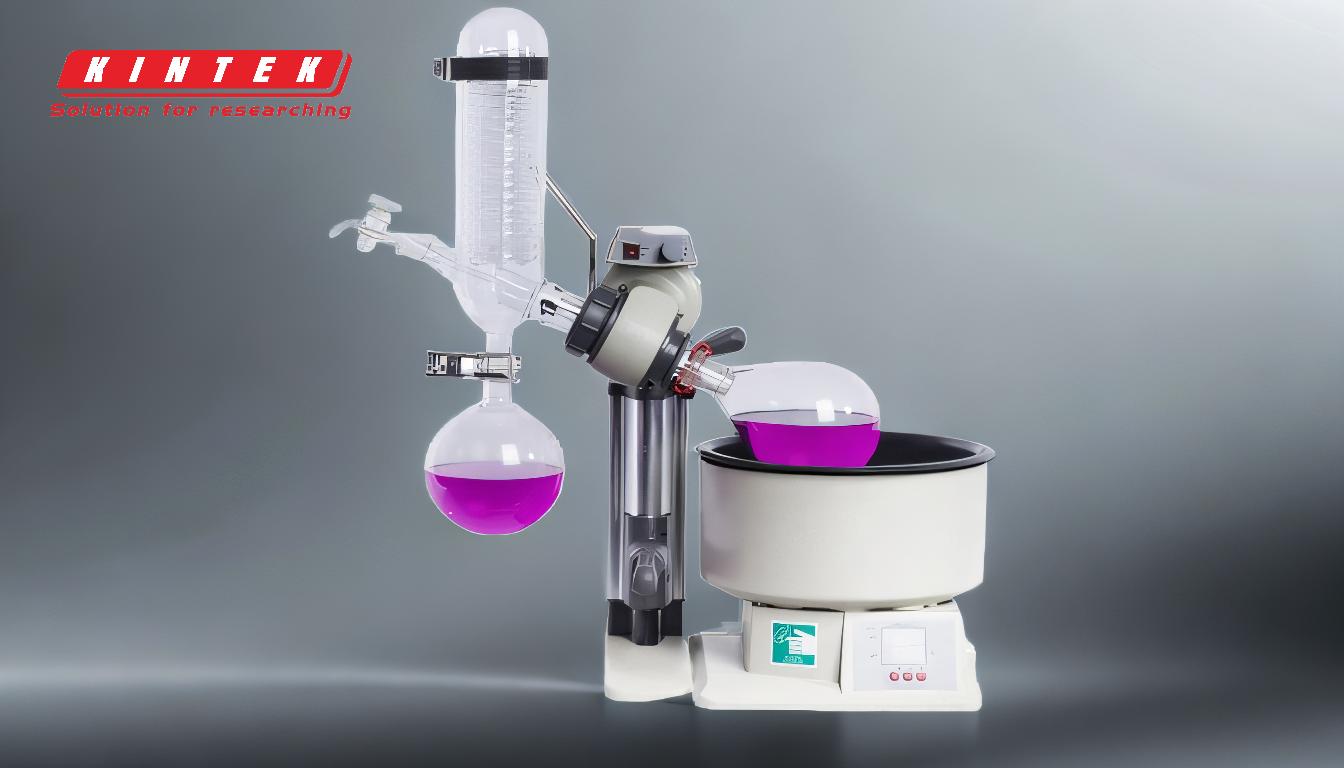The optimal rotation speed for a rotary evaporator depends on several factors, including the solvent type, sample consistency, flask size, and desired evaporation rate. Generally, a moderate rotation speed—around one-third of the maximum allowable value—is recommended to ensure efficient heat transfer and agitation without causing mechanical damage or reducing evaporation efficiency. For most applications, starting at approximately 100 RPM is a good practice, but adjustments may be needed based on specific experimental conditions. Balancing speed with other variables like bath temperature, vacuum level, and condenser efficiency is crucial for achieving optimal results while protecting sensitive samples and equipment.
Key Points Explained:

-
Moderate Rotation Speed is Ideal:
- The rotation speed should be moderate, typically around one-third of the maximum allowable value for the equipment. This ensures proper agitation of the solution and efficient heat transfer between the flask and the solvent.
- Excessive speed can lead to mechanical damage, while insufficient speed may reduce evaporation efficiency.
-
Starting Point: 100 RPM:
- A common starting point for rotation speed is around 100 RPM. This provides a baseline for most applications and can be adjusted based on specific needs.
- This speed is often recommended in standard operating procedures to ensure stability and efficiency during the evaporation process.
-
Factors Influencing Rotation Speed:
- Solvent Type: Different solvents have varying boiling points and viscosities, which affect how quickly they evaporate. Adjusting the rotation speed can optimize evaporation for specific solvents.
- Sample Consistency: Thicker or more viscous samples may require higher speeds to ensure proper mixing and heat transfer.
- Flask Size and Volume: Larger flasks or higher volumes may necessitate higher rotation speeds to maintain effective agitation and evaporation.
-
Balancing Speed with Other Parameters:
- Bath Temperature: Higher temperatures can increase evaporation rates, but they must be balanced with rotation speed to avoid overheating sensitive samples.
- Vacuum Level: A stronger vacuum lowers the boiling point of the solvent, allowing for faster evaporation. However, the rotation speed must be adjusted to match the vacuum level to prevent splashing or bumping.
- Condenser Efficiency: Efficient condensation ensures that evaporated solvents are recovered effectively. The rotation speed should complement the condenser's capacity to handle the evaporation rate.
-
Avoiding Mechanical Damage:
- High rotation speeds can cause wear and tear on the rotary evaporator's components, such as the motor and seals. Operating within the recommended speed range helps extend the equipment's lifespan.
- Excessive speeds can also lead to splashing or bumping, which may contaminate the sample or damage the equipment.
-
Practical Recommendations:
- Begin with a rotation speed of approximately 100 RPM and adjust as needed based on the solvent, sample, and flask size.
- Monitor the evaporation process closely, especially when adjusting speed, to ensure stability and efficiency.
- Follow the manufacturer's guidelines for maximum rotation speed and other operational parameters to avoid equipment damage.
-
Automation and Stability:
- Modern rotary evaporators often feature automated controls for rotation speed, vacuum level, and bath temperature. These systems can maintain optimal conditions for evaporation without constant supervision.
- Once stable conditions are achieved, the rotary evaporator can often complete the evaporation process autonomously, saving time and effort.
By considering these factors and following recommended guidelines, users can determine the appropriate rotation speed for their rotary evaporator, ensuring efficient and safe operation while protecting sensitive samples and equipment.
Summary Table:
| Factor | Impact on Rotation Speed |
|---|---|
| Solvent Type | Adjust speed based on boiling point and viscosity. |
| Sample Consistency | Higher speeds for thicker or viscous samples. |
| Flask Size | Larger flasks may require higher speeds for effective agitation. |
| Bath Temperature | Balance with speed to avoid overheating sensitive samples. |
| Vacuum Level | Adjust speed to match vacuum strength and prevent splashing. |
| Condenser Efficiency | Ensure speed complements condenser capacity for effective solvent recovery. |
| Starting Point | Begin at ~100 RPM and adjust as needed. |
Need help optimizing your rotary evaporator settings? Contact our experts today for tailored advice!












